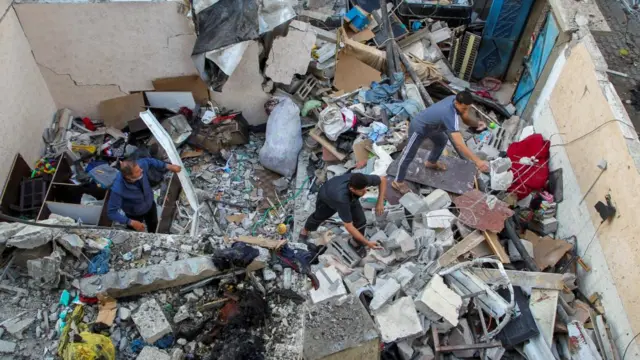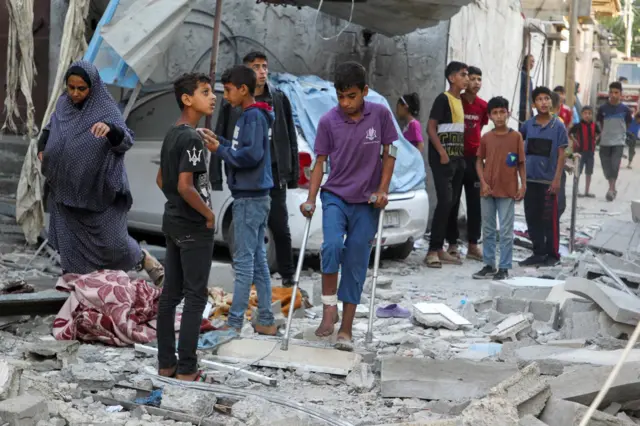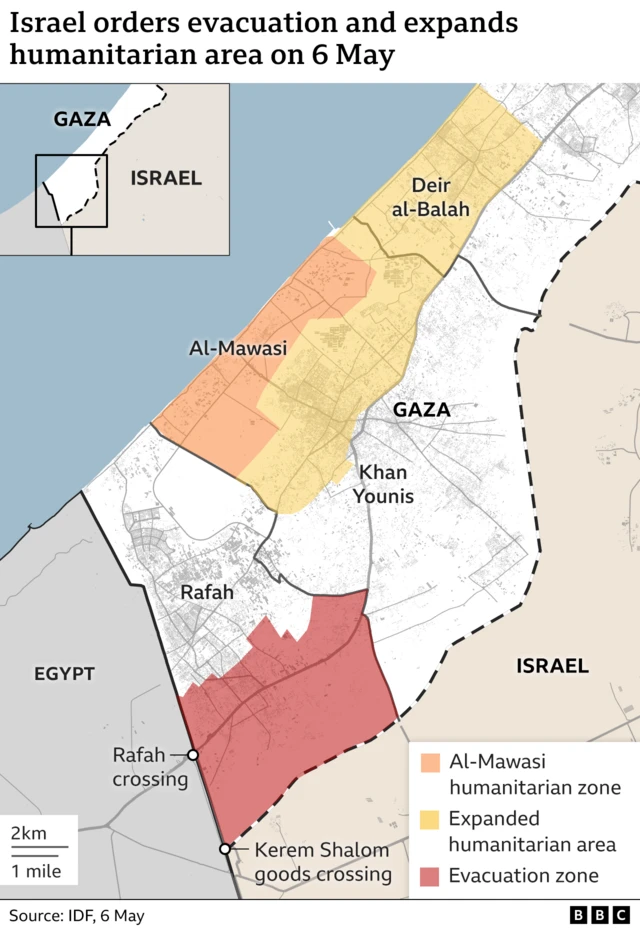Israel-Gaza conflict: How we got herepublished at 09:52 BST 9 May 2024
Our coverage this morning has been following reports of heavy shelling in Rafah, after Joe Biden warned Israel against a major ground offensive there.
As a reminder, here's a brief look at how the conflict has developed in recent months up until this point:
- On 7 October, Hamas launched an attack on Israel, killing about 1,200 people and taking more than 250 others to Gaza as hostages
- Israel retaliated with a campaign of air strikes on targets in Gaza, and then launched a ground invasion three weeks later
- Israel's attacks were initially focused on northern Gaza, particularly Gaza City and tunnels beneath it
- A deal agreed in November saw Hamas release 105 hostages in return for a week-long ceasefire and some 240 Palestinian prisoners in Israeli jails. Israel says 128 hostages are unaccounted for
- Following a temporary truce in late November, the Israel Defense Forces (IDF) extended ground operations to southern Gaza
- More than 34,000 Palestinians have been killed, and tens of thousands injured by Israeli strikes since the start of the war, Gaza's Hamas-run health ministry says
- On Monday, the Israeli military ordered tens of thousands of civilians to begin evacuating nearby eastern parts of Rafah city, ahead of what it called a "limited" operation to eliminate Hamas fighters
- Hamas said Israel's seizure of the Rafah crossing was aimed at undermining attempts by regional mediators to secure a new ceasefire deal. Israeli Prime Minister Benjamin Netanyahu said Hamas's announcement was "very far from Israel's necessary requirements"
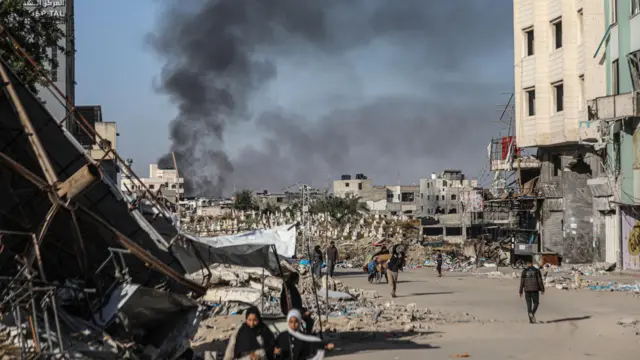
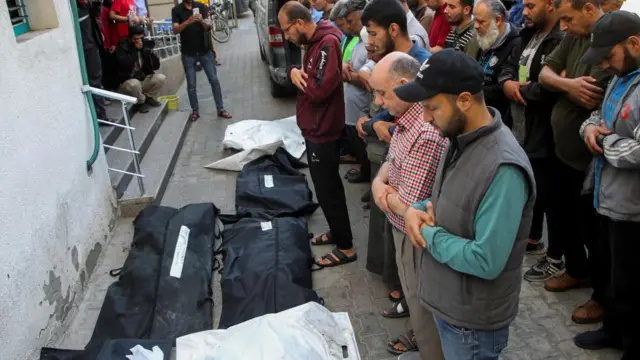
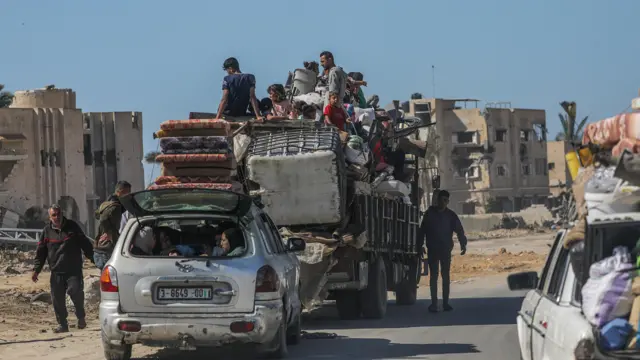



![A screengrab of the tweet, which reads: "Biden [heart emoji] Hamas"](https://ichef.bbci.co.uk/ace/standard/640/cpsprodpb/vivo/live/images/2024/5/9/2ef7599b-9df5-4426-bea9-1559c9602c53.png.webp)
